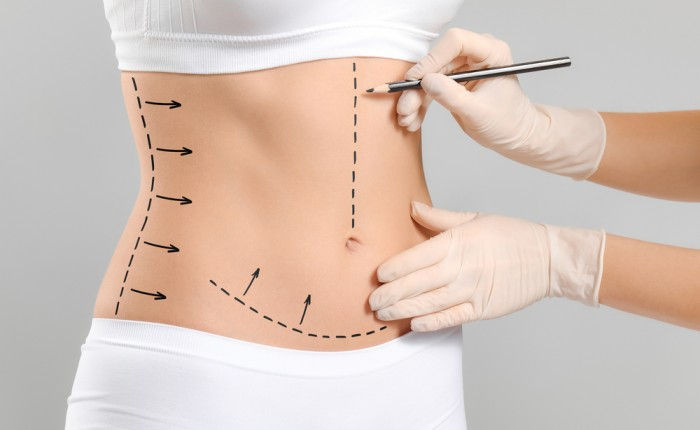Revision Rhinoplasty in Islamabad: When and Why It’s Needed
- sadaf khan sudozai
- Jul 2
- 4 min read
Rhinoplasty is a complex and delicate surgical procedure designed to improve the appearance or function of the nose. While many patients achieve satisfying results after their initial surgery, some may find that the outcome does not meet their expectations—or worse, results in complications. That’s where revision rhinoplasty comes in. For those dealing with functional issues or aesthetic dissatisfaction after a prior nose surgery, Rhinoplasty in Islamabad offers advanced revision procedures performed by experienced surgeons who specialize in secondary corrections.

What Is Revision Rhinoplasty?
Revision rhinoplasty, also known as secondary rhinoplasty, is a surgical procedure performed to correct or improve the results of a previous nose job. Whether the original surgery caused breathing difficulties or simply didn’t produce the desired aesthetic outcome, revision rhinoplasty aims to restore both function and appearance.
Because the procedure involves working with altered and often scarred tissue, it tends to be more complex than primary rhinoplasty. Patients should seek a highly skilled and board-certified plastic surgeon for this procedure.
Common Reasons for Revision Rhinoplasty
There are several scenarios in which revision rhinoplasty may be necessary. These can be categorized into functional, aesthetic, and structural concerns.
1. Breathing Difficulties
One of the most common medical reasons for revision rhinoplasty is impaired nasal function. Some patients may find it difficult to breathe through their nose after the initial surgery, especially if the septum or internal nasal valves were not handled correctly.
2. Unsatisfactory Aesthetic Results
Sometimes, the original surgery fails to deliver the cosmetic improvement the patient expected. Common aesthetic concerns include:
Asymmetry
Over- or under-reduction of the nasal hump
Droopy or overly rotated nasal tip
Nasal bridge collapse
Pinched or wide nostrils
3. Healing Complications
Even with the most skilled hands, unpredictable healing can affect the final result. Scar tissue buildup, cartilage warping, or uneven swelling may distort the nose’s appearance over time.
4. Trauma After Surgery
Accidents or trauma post-surgery can displace or damage the corrected nasal structure, requiring another procedure to restore its form and function.
When to Consider Revision Rhinoplasty
Not every imperfection requires immediate corrective surgery. It’s important to allow adequate time for the nose to fully heal before making the decision to undergo another procedure.
General Guidelines:
Wait at least 10–12 months after the initial surgery to allow complete healing and resolution of swelling.
Consider revision only if the nose’s appearance or function has not improved or has worsened.
Seek revision if you experience discomfort, breathing issues, or emotional distress caused by the initial outcome.
Consulting with a qualified surgeon in Islamabad can help determine the right time and approach for revision surgery.
What Makes Revision Rhinoplasty More Complex?
Revision rhinoplasty is technically demanding for several reasons:
Scar Tissue
The presence of internal scar tissue from the first surgery can make dissection and reshaping more difficult. It also increases the unpredictability of healing in the second procedure.
Limited Tissue Availability
In many cases, the nasal structure may lack sufficient cartilage for reshaping. Surgeons may need to harvest cartilage from the patient’s ear or rib to reconstruct the nasal framework.
Distorted Anatomy
Previous surgical alterations can distort the natural anatomy of the nose, making it more challenging to achieve balance and symmetry.
Patient Expectations
Patients seeking revision are often more emotionally affected by their previous experience. As a result, they may have higher expectations, adding psychological complexity to the case.
These challenges underline the importance of selecting an experienced surgeon who regularly performs revision rhinoplasty procedures.
What to Expect from the Procedure
Revision rhinoplasty typically follows the same general steps as a primary rhinoplasty but with a more tailored and cautious approach. Here's what patients in Islamabad can expect:
Consultation
Your surgeon will review your surgical history, examine your current nasal structure, and discuss your goals. Pre-operative photos and possibly imaging simulations will help with planning.
Surgical Technique
Depending on the complexity, the procedure may use:
Open approach: Offers better visibility, often preferred for revisions.
Closed approach: Used for minor corrections, with all incisions inside the nostrils.
Cartilage Grafting
When needed, cartilage from the ear or rib is used to support or reshape the nose. This step is essential in cases where the nasal structure has collapsed or weakened.
Duration
Revision surgery may take longer than primary rhinoplasty—typically around 2.5 to 4 hours—due to its complexity.
Recovery After Revision Rhinoplasty
While recovery is similar to primary rhinoplasty, healing after revision surgery can be slower. Here's what you can expect:
Initial swelling and bruising: Subside within 10–14 days.
Nasal splint: Usually removed within the first week.
Residual swelling: Can last for several months, especially in the nasal tip.
Final results: Typically visible within 12–18 months.
Following post-operative instructions and attending regular follow-ups is essential for optimal healing and results.
How to Choose the Right Surgeon in Islamabad
Because of the delicate nature of revision rhinoplasty, the choice of surgeon plays a critical role in your outcome. Here’s what to look for:
Board certification in plastic, reconstructive, or cosmetic surgery
Specialization in facial procedures, especially revision rhinoplasty
Before-and-after photos of previous revision cases
Transparent consultation that outlines risks, limitations, and expected results
Access to advanced surgical tools and facilities for precision and safety
Many top clinics in Islamabad offer consultation packages that include imaging, planning, and customized treatment recommendations.
Cost of Revision Rhinoplasty in Islamabad
The cost of revision rhinoplasty may be higher than the initial procedure due to its complexity. Factors affecting the cost include:
Surgeon’s experience and reputation
Surgical facility and equipment used
Use of cartilage grafts
Anesthesia and operating time
Post-operative care and follow-up sessions
While pricing varies, patients in Islamabad generally benefit from affordable yet high-quality care compared to international markets.
Final Thoughts
Revision rhinoplasty is a powerful option for individuals who are dissatisfied with their initial nose surgery or are facing functional complications. Whether you’re dealing with cosmetic concerns, breathing issues, or unexpected healing outcomes, secondary rhinoplasty can restore your confidence and comfort when performed by the right expert.
For those seeking safe, customized, and expert-guided revision rhinoplasty, Dynamic Clinic in Islamabad is a trusted destination. With a team of board-certified surgeons, advanced surgical tools, and patient-centric care, Dynamic Clinic ensures that each revision is approached with precision and compassion, giving you the outcome you truly deserve.





Comments